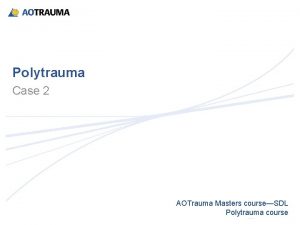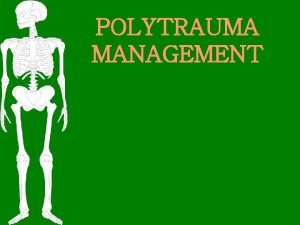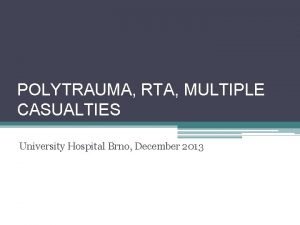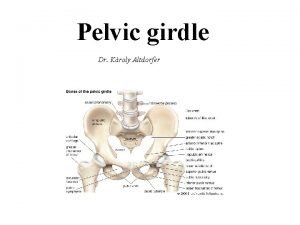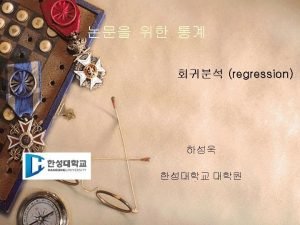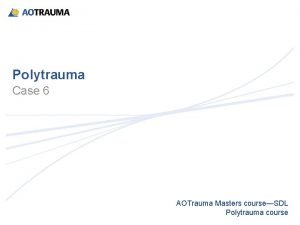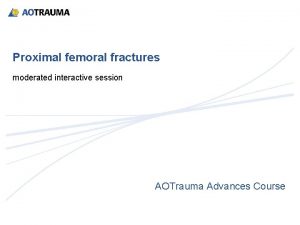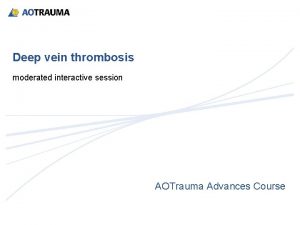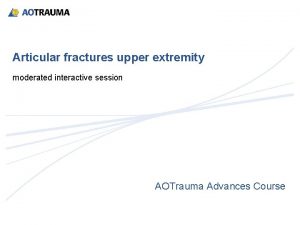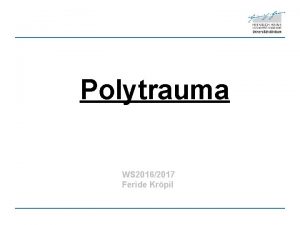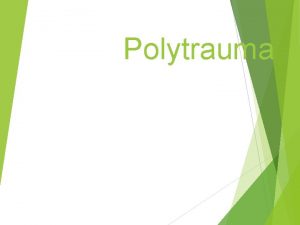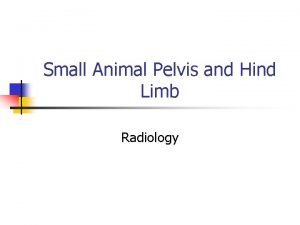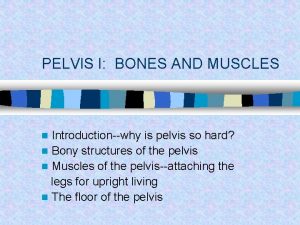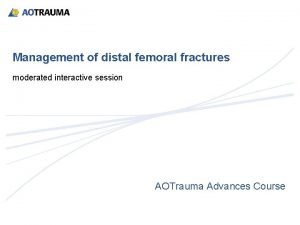Polytrauma and pelvis moderated interactive session AOTrauma Advances

















- Slides: 17

Polytrauma and pelvis moderated interactive session AOTrauma Advances Course

Learning outcomes • Outline the anatomy of the pelvic ring • Describe the role of early pelvic stabilization in hemodynamically unstable patients • Define the indications for DCO vs early total care in the polytrauma patient

In which percentage of your polytrauma patients do you use early total care (ETC)? 1. Less than 10% 2. 10– 30% 3. 30%– 50% 4. More than 50%

In an unstable C type pelvic facture, what is your initial management? 1. Anterior frame AISS 2. Anterior frame ASIS 3. Anterior frame Iliac crest 4. Pelvic clamp 5. Pelvic binder/sheet

Key points from lectures Polytrauma care • Polytrauma patients are a spectrum • You have to tailor their management according to their physiological status • ETC and damage control orthopedics (DCO) have their own indications

Key points from lectures Evaluation and emergency management of pelvic ring Injuries • Learn to examine patient and x-rays carefully • Look for an open pelvic injury • Immediate “stabilization”—sheet/binder/C-clamp • Know your institution’s strengths • Always support interdisciplinary cooperation and do what your institution does best

Key points from lectures Indications and concepts for ring fixation • Fix the pelvis as soon as possible • Fix type C fractures anterior and posterior • New reduction tools helpful • Different techniques for posterior ring biomechanically equal

Key points from lectures Surgical approach for ORIF posterior wall • Posterior wall fractures represent a spectrum of lesions • Do not underestimate this injury! • Kocher Langenbeck (KL) is the preferred approach • KL + trochanteric flip osteotomy: proximal wall fragments with anterior and superior extension/fracture of the femoral head (Pipkin lesion)

29 -year-old in a high-speed motor vehicle accident, back seat passenger • Isolated mid-shaft femoral fracture • Initial ABG–p. H 7. 3, p. CO 2 53, p. O 2 26, Bicarb 27 • ABG on 100% O 2–p. H 7. 3, p. CO 2 40, p. O 2 89, Bicarb 22 • Bilateral pneumothorax and bilateral pulmonary contusions Which should be used? 1. ETC 2. DCO

29 -year-old in a high-speed motor vehicle accident, back seat passenger • Closed mid-shaft right femoral fracture • Open grade I mid-shaft left tibial fracture • Pelvis type B injury • BP: 130/90, HR: 100, platelet count 250000, chest x-rays normal Which should we use? 1. ETC 2. DCO

29 -year-old in a high-speed motor vehicle accident, back seat passenger • Closed mid-shaft right femoral fracture • Open grade I mid-shaft left tibial fracture • Pelvis type B injury • Bilateral pneumothorax and bilateral pulmonary contusions • BP: 90/40, HR: 100, platelet count 95000, T|: 32°C Which should we use? 1. ETC 2. DCO

52 -year-old male trapped between two large vehicles Vitals BP 80/60, RR 36, HR 100—lower limbs vascular but insensate

What would be your first step to manage the pelvic fracture and the patient? 1. Laparotomy and pelvic packing 2. Pelvic binder 3. Anterior external fixation 4. C-clamp 5. Angiography 6. CT contrast 7. ICU for resuscitation

What now? • Patient urgently taken to OR for pelvic untwisting, laparotomy, aorta crossclamping • C-clamp is applied for front and back injury • Vitals unchanged 1. Pack pelvis 2. Angiography 3. Answers 1 and 2 4. Other

Discussion point • 52 -year-old man trapped between two large vehicles • Vitals BP 80/60, RR 36, HR 100—lower limbs vascular but insensate Pelvic bleeding protocol [C Routt] • Fluids and transfusion • Provisional stabilization • Rewarm • Embolization • Pelvic packing • Definitive fixation • Mobilization

Algorithm of care

Summary • Outline of pelvic ring anatomy • Radiology and classification after investigation • Anterior plating and external fixation technique • Posterior ring reduction and fixation • Indications for urgent pelvis stabilization • The open pelvis • Posterior wall acetabular problems including marginal impaction and outcomes
 Aotrauma reference
Aotrauma reference Polytrauma
Polytrauma Polytrauma slideshare
Polytrauma slideshare Rta polytrauma
Rta polytrauma Pelvis major
Pelvis major Moderator examples
Moderator examples Moderated multiple regression
Moderated multiple regression Moderated multiple regression
Moderated multiple regression Parallel mediation model
Parallel mediation model Interactive session poster
Interactive session poster Payroll in tally
Payroll in tally What is long term loans and advances
What is long term loans and advances Lurbinectedin posologie
Lurbinectedin posologie Chapter 17 section 2 the axis advances
Chapter 17 section 2 the axis advances Advances in technology during wwii
Advances in technology during wwii Intellectual development of infants chapter 9
Intellectual development of infants chapter 9 Advances in real time rendering
Advances in real time rendering Photodesintegration
Photodesintegration

